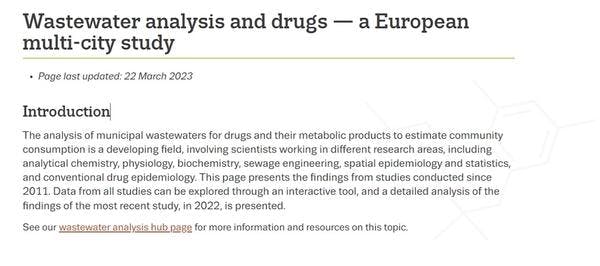Wastewater analysis and drugs — a European multi-city study (2022 update)
The analysis of municipal wastewaters for drugs and their metabolic products to estimate community consumption is a developing field, involving scientists working in different research areas, including analytical chemistry, physiology, biochemistry, sewage engineering, spatial epidemiology and statistics, and conventional drug epidemiology. This page presents the findings from studies conducted since 2011. Data from all studies can be explored through an interactive tool, and a detailed analysis of the findings of the most recent study, in 2022, is presented.
See our wastewater analysis hub page for more information and resources on this topic.
The project analysed wastewater in over 100 European cities and towns (hereinafter referred to as ‘cities') to explore the drug-taking habits of those who live in them. The results provide a valuable snapshot of the drug flow through the cities involved, revealing marked geographical variations.
Wastewater analysis is a rapidly developing scientific discipline with the potential for monitoring real-time data on geographical and temporal trends in illicit drug use. Originally used in the 1990s to monitor the environmental impact of liquid household waste, the method has since been used to estimate illicit drug consumption in different cities (Daughton, 2001; van Nuijs et al., 2011; Zuccato et al., 2008). It involves sampling a source of wastewater, such as a sewage influent to a wastewater treatment plant. This allows scientists to estimate the quantity of drugs consumed by a community by measuring the levels of illicit drugs and their metabolites excreted in urine (Zuccato et al., 2008).
